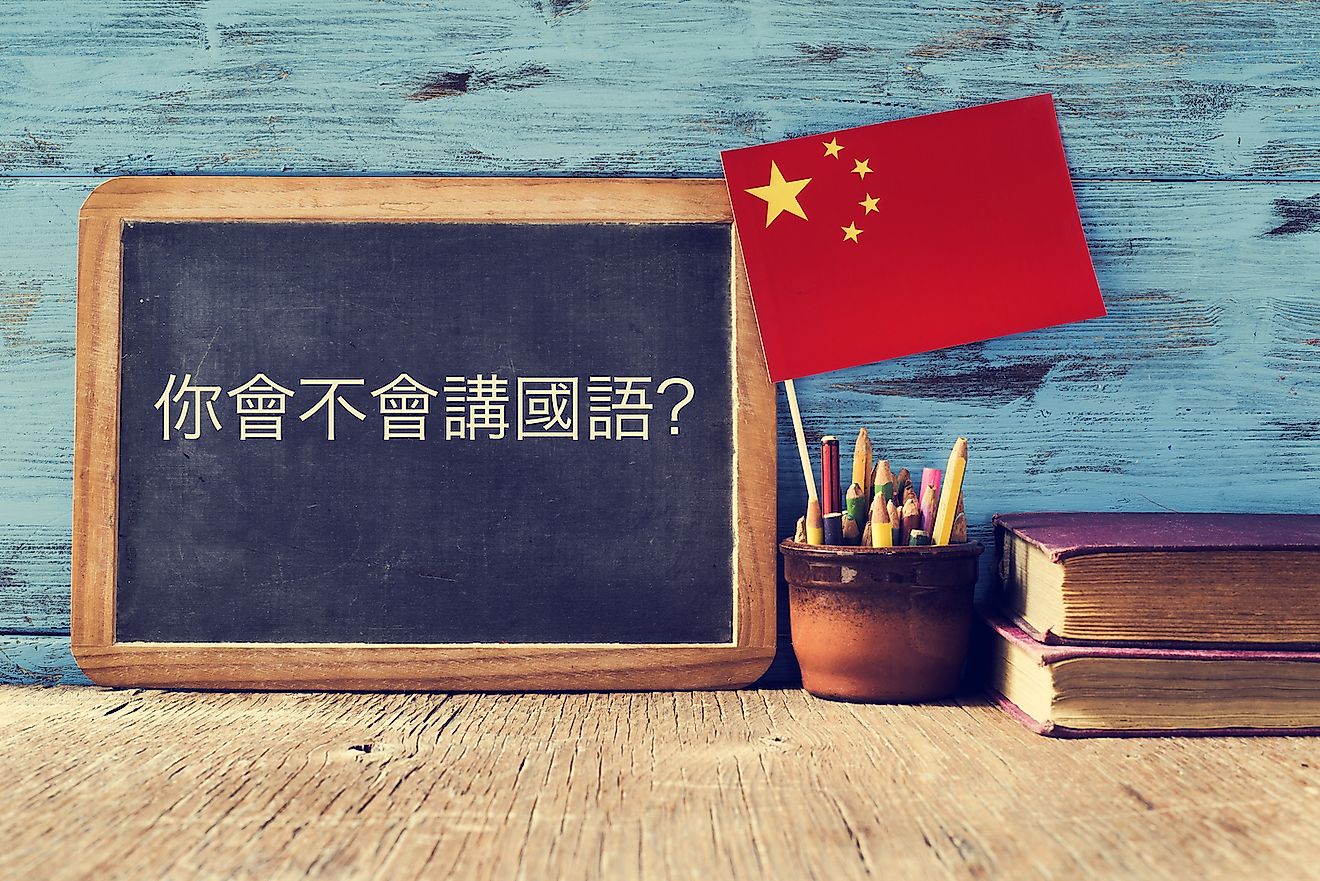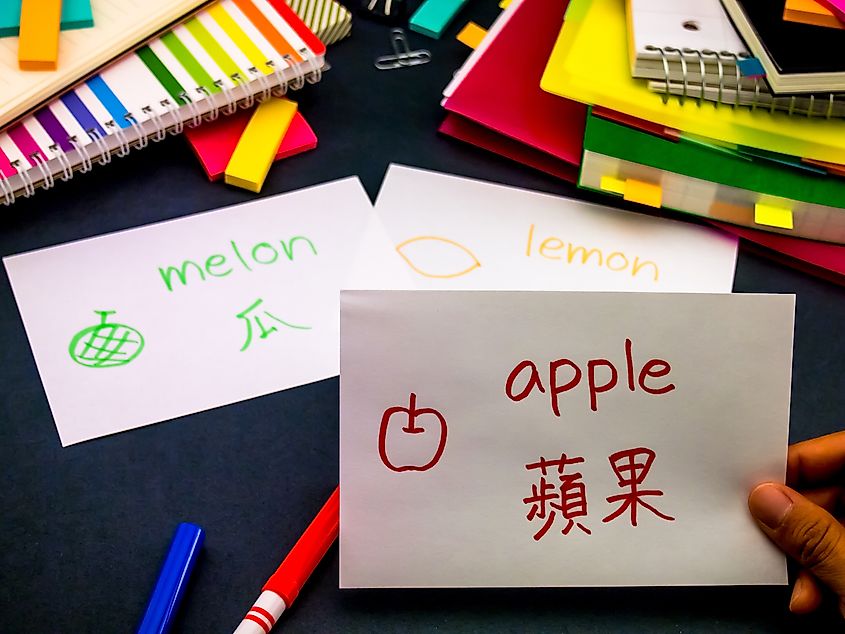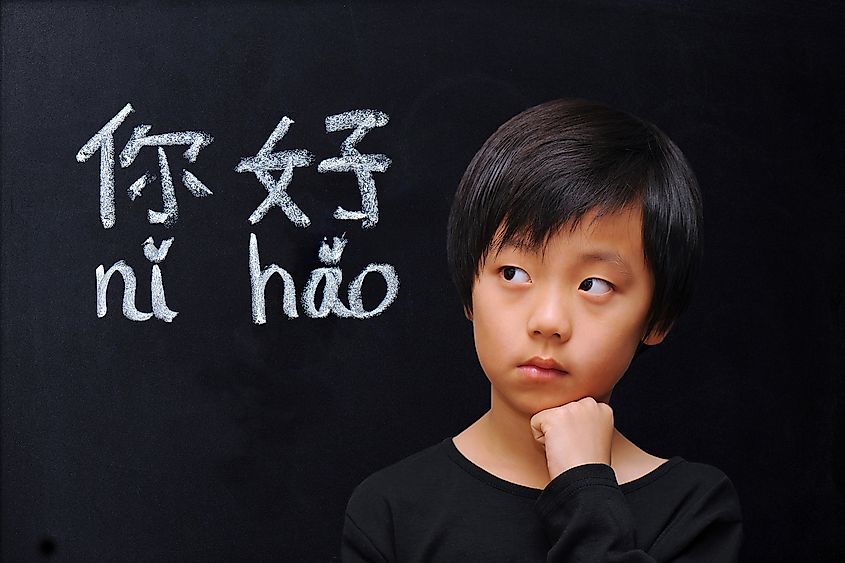What Languages Are Spoken in China?

- Standard Chinese is the official language in mainland China, as well as in Taiwan, and is also known as Standard Mandarin or Modern Standard Mandarin.
- Wu Chinese is a dialect of Chinese that is predominantly spoken in the eastern region of China. The language exists in six main subgroups, which are geographically defined.
- English is one of the most critical foreign languages in China, with about 10 million speakers all over the country. The majority of English speakers are found in the urban centers of the country.
- Chinese Sign Language is the primary sign language used among the deaf population in mainland China and Taiwan and is used by a significant percentage of the estimated 20 million deaf people in China.
China is home to 56 ethnic groups, all of whom have played a critical role in the development of the various languages spoken in China. Linguists believe that there are 297 living languages in China today. These languages are geographically defined, and are found in mainland China, Taiwan, Hong Kong, and Tibet. Mandarin Chinese is the most popular language in China, with over 955 million speakers out of China’s total population of 1.21 billion people.
National Language of China: Standard Chinese

Standard Chinese is the official language in mainland China, as well as in Taiwan, and is also known as Standard Mandarin or Modern Standard Mandarin. The language is a standardized dialect of Mandarin language, but features aspects of other dialects in its usage, including written vernacular Chinese in the language’s grammar, Mandarin dialects in its vocabulary, and the Beijing dialect in the pronunciation of its words. In mainland China, Standard Chinese is also known as Putonghua (loosely translating to “common speech”), while in Taiwan the language is referred to as Guoyu, which loosely translates to “national language." The use of Standard Chinese in mainland China is regulated by the National Language Regulating Committee, while the National Languages Committee is mandated to regulate the language’s use in Taiwan. The law provides Standard Chinese as the lingua franca in China and is used as a means of communication, enabling speakers of unintelligible varieties of Chinese languages. Mainland China has a law titled the “National Common Language and Writing Law,” whose provisions call for the mandatory promotion of Standard Chinese by the Chinese government. Records from China’s Ministry of Education show that about 70% of the population in mainland China can speak Standard Chinese, but only 10% can speak the language fluently. Standard Chinese is incorporated into the education curriculum in both mainland China as well as in Taiwan, with the government aiming to have the language achieve a penetration of at least 80% across the country by 2020. In its written format, Standard Chinese uses both simplified Chinese characters (used mainly in Putonghua), as well as traditional Chinese characters (used primarily in Guoyu). For the braille system, the language uses Taiwanese Braille, Mainland Chinese Braille, and Two-Cell Chinese Braille.
Official Languages of China

Another language that has official status in China is Cantonese. The origin of the language can be traced to the port city of Guangzhou, from where its use spread throughout the Pearl River Delta. Guangzhou is also known as Canton, and it is from this city that the language got its name. Cantonese is used as the official language in Hong Kong, as provided for by the Hong Kong Basic Law, and is utilized in all government communication, including court and tribunal proceedings. Cantonese is also the official language in Macau, along with Portuguese. The use of Cantonese in Hong Kong is regulated by the Official Language Division of the Civil Service Bureau, a government institution. In Macau, the use of the language is regulated by the Public Administration and Civil Service Bureau. According to linguists, Cantonese is defined as a variant of the Chinese language or as a prestige variant of Yue, a subdivision of Chinese. When classified with other closely related Yuehai dialects, Cantonese has about 80 million speakers across the country. In the Guangzhou province, Cantonese is used as the lingua franca as well as in the neighboring region of Guangxi. Cantonese can be divided into three main dialects: the Guangzhou dialect, Hong Kong dialect, and Macau dialect. All of these dialects are geographically defined. Written Cantonese uses traditional Chinese characters, as well as characters from written vernacular Chinese. Blind Cantonese speakers use the Cantonese braille system.
Regional Languages of China

Wu Chinese is a dialect of Chinese that is predominantly spoken in the eastern region of China. The language exists in six main subgroups, which are geographically defined. These subgroups include Taihu, Taizhou, Oujiang, Wuzhou, Chu-Qu, and Xuanzhou. The language can also be divided into 14 varieties, which include the Shanghainese, Huzhou, Wuxi, Ningbo, Suzhou, Changzhou, Jiaxing, Hangzhou, Shaoxing, Xuanzhou, Chuqu, Taizhou, Wuzhou, and Oujiang dialects. The total number of Wu speakers in China is estimated to be about 80 million people. Fuzhou is a dialect of Houguan Chinese subgroup and a prestige variety of the Eastern Min branch of the Chinese language. The dialect is classified as one of the major regional languages in China and has speakers predominantly located in the Fujian province. The dialect is centered in the city of Fuzhou, from which the dialect gets its name. The total number of Fuzhou speakers is estimated to be over 10 million all over the country.
The Hokkien dialect is another major regional language in China. The language is a dialect of the Southern Min language group. The dialect originated from the Fujian province and spread to different regions in southeastern China. Today, the total number of Hokkien dialect speakers is estimated to be about 37 million people. In Taiwan, Hokkien is one of the statutory languages used for the signage in public transportation. The Hokkien dialect is divided into ten dialects, which include Medan, Penang, Taiwanese, Zhangzhou, Quanzhou, Xiamen, and Singaporean. Other regional languages include Hakka, Xiang, Foochow, and Gan.
Foreign Languages Spoken in China
English is one of the most critical foreign languages in China, with about 10 million speakers all over the country. The majority of English speakers are found in the urban centers of the country. In Hong Kong, English is established as an official language and is used in both print and electronic media. English is also used as a lingua franca in China during international engagements. Another major international language in China is Portuguese, which is used as the official language in Macau.
Sign Language in China
Chinese Sign Language is the primary sign language used among the deaf population in mainland China and Taiwan and is used by a significant percentage of the estimated 20 million deaf people in China. Tibetan Sign Language is used by the deaf residents of Tibet, and particularly in the Lhasa region. Tibetan Sign Language exists as a standardized language, which was formulated between 2001 and 2004. In the past, the use of sign Language in China was discouraged and in some cases completely banned as people believed that it would further inhibit a child’s auditory capabilities.
Overview of Languages Spoken in China
| Rank | Languages in China |
|---|---|
| 1 | Standard Chinese (Mandarin) |
| 2 | Yue (Cantonese) |
| 3 | Wu (Shanghainese) |
| 4 | Minbei (Fuzhou) |
| 5 | Minnan (Hokkien-Taiwanese) |
| 6 | Xiang |
| 7 | Gan |
| 8 | Hakka |
| 9 | Zhuang |
| 10 | Mongolian |
| 11 | Uighur |
| 12 | Krygyz |
| 13 | Tibetan |











